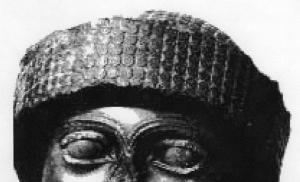Potassium cyanide. Cyanide
INJURIES BY POISONIC SUBSTANCES WITH GENERAL TOXIC EFFECT: PYROCYCAL ACID AND POTASSIUM CYANIDE
Hydrocyanic acid and potassium cyanide are generally toxic substances, as are sodium, cyanogen chloride, cyanogen bromide, and carbon monoxide.
First hydrocyanic acid was synthesized by the Swedish scientist Karl Scheele in 1782. History knows cases of the use of cyanide for mass destruction of people. French army used hydrocyanic acid as a toxic substance during the First World War (1916 on the Somme River), in Hitler’s extermination camps the Nazis (1943-1945) used poisonous gases cyclones (esters of cyanformic acid), American troops in South Vietnam(1963) used toxic organic cyanides (CS type gases) against civilians. It is also known that in the United States the death penalty is used by poisoning convicts with hydrocyanic acid fumes in a special chamber.
Due to their high chemical activity and ability to interact with numerous compounds of various classes, cyanides are widely used in many industries, agriculture, scientific research, and this creates many opportunities for intoxication.
Thus, hydrocyanic acid and a large number of its derivatives are used in the extraction of precious metals from ores, in galvanoplastic gilding and silvering, in the production of aromatic substances, chemical fibers, plastics, rubber, organic glass, plant growth stimulants, herbicides. Cyanides are also used as insecticides, fertilizers and defoliants. Hydrocyanic acid is released in gaseous state in many production processes. There may also be cyanide poisoning due to eating large quantities of almond, peach, apricot, cherry, plum and other plants of the Rosaceae family or infusions from their fruits. It turned out that they all contain the glycoside amygdalin, which decomposes in the body under the influence of the emulsin enzyme to form hydrocyanic acid, benzaldehyde and 2 glucose molecules. Largest quantity amygdalin is found in bitter almonds (up to 3%) and apricot seeds (up to 2%).
Physicochemical properties and toxicity of hydrocyanic acid
Hydrocyanic acid - HCN - is a colorless, easily boiling (at 26 ° C) liquid, with the smell of bitter almonds, with a specific gravity of 0.7, freezes at - 13.4 ° C. Cyanide poisoning develops when inhaling vapors of a toxic substance when entering through the skin and through the mouth. IN war time the most likely route of entry into the body is inhalation. According to WHO, Lt50 of hydrocyanic acid is 2 g/min/m3. In case of poisoning by mouth, lethal doses for humans are: HCN - 1 mg/kg, KCN - 2.5 mg/kg; NaСN - 1.8 mg/kg.
Mechanism of toxic action
The mechanism of action of hydrocyanic acid has been studied in some detail. It is a substance that causes oxygen starvation of tissue type. In this case, a high oxygen content is observed in both arterial and venous blood and thus a decrease in the arteriovenous difference, a sharp decrease in oxygen consumption by tissues with a decrease in the formation of carbon dioxide in them.
It has been established that cyanide interferes with redox processes in tissues, disrupting the activation of oxygen by cytochrome oxidase. (The lecturer can dwell in more detail on modern concepts of cellular respiration).
Hydrocyanic acid and its salts, dissolved in the blood, reach the tissues, where they interact with the ferric form of iron, cytochrome oxidase. By combining with cyanide, cytochrome oxidase loses its ability to transfer electrons to molecular oxygen. Due to the failure of the final link of oxidation, the entire respiratory chain is blocked and tissue hypoxia develops. Oxygen is delivered to the tissues in sufficient quantities with arterial blood, but is not absorbed by them and passes unchanged into the venous bed. At the same time, the processes of formation of macroergs necessary for the normal functioning of various organs and systems are disrupted. Glycolysis is activated, that is, the metabolism is rearranged from aerobic to anaerobic. The activity of other enzymes - catalase, peroxidase, lactate dehydrogenase - is also suppressed.
The effect of cyanide on various organs and systems
Effect on the nervous system. As a result of tissue hypoxia, which develops under the influence of hydrocyanic acid, the functions of the central nervous system are primarily disrupted. Cyanides in toxic doses initially cause excitation of the central nervous system, and then its depression. In particular, at the beginning of intoxication, excitation of the respiratory and vasomotor centers is observed. This is manifested by a rise in blood pressure and the development of severe shortness of breath. An extreme form of excitation of the central nervous system is clonic-tonic convulsions. Severe excitation of the nervous system is replaced by paralysis (of the respiratory and vasomotor centers).
Action on respiratory system . In the picture of acute poisoning, there is a pronounced increase in the frequency and depth of breathing. Developing shortness of breath should apparently be considered as a compensatory reaction of the body to hypoxia. The stimulating effect of cyanide on respiration is due to the stimulation of the chemoreceptors of the carotid sinus and the direct effect of the poison on the cells of the respiratory center. The initial excitation of breathing as intoxication develops is replaced by its depression until it stops completely. The causes of these disorders are tissue hypoxia and exhaustion energy resources in the cells of the carotid sinus and in the centers of the medulla oblongata.
Action on cardiovascular system . In the initial period of intoxication, a slowdown in heart rate is observed. An increase in blood pressure and an increase in cardiac output occurs due to cyanide stimulation of the chemoreceptors of the carotid sinus and cells of the vasomotor center, on the one hand, the release of catecholamines from the adrenal glands and, as a result, vasospasm, on the other. As poisoning progresses arterial pressure falls, the pulse quickens, acute cardiovascular failure develops and cardiac arrest occurs.
Changes in the blood system. The content of red blood cells in the blood increases, which is explained by the reflex contraction of the spleen in response to developing hypoxia. The color of venous blood becomes bright scarlet due to excess oxygen not absorbed by the tissues. The arteriovenous difference in oxygen decreases sharply. When tissue respiration is suppressed, both the gas and biochemical composition of the blood changes. The CO2 content in the blood decreases due to less formation and increased release during hyperventilation. This leads at the beginning of the development of intoxication to gas alkalosis, which changes to metabolic acidosis, which is a consequence of the activation of glycolytic processes. Under-oxidized metabolic products accumulate in the blood. The content of lactic acid increases, the content of acetone bodies increases, and hyperglycemia is noted. The development of hypothermia is explained by disruption of redox processes in tissues. Thus, hydrocyanic acid and its salts cause the phenomenon of tissue hypoxia and associated disorders of respiration, blood circulation, metabolism, and the function of the central nervous system, the severity of which depends on the severity of intoxication.
CLINICAL PICTURE OF CYANIDE POISONING
Cyanide poisoning is characterized by the early appearance of signs of intoxication, the rapid development of oxygen starvation, primary damage to the central nervous system and probable death in a short time.
There are lightning-fast and delayed forms. When poison enters the body in large quantities death can occur almost instantly. The affected person immediately loses consciousness, breathing becomes rapid and shallow, the pulse quickens, is arrhythmic, and convulsions occur. The convulsive period is short-lived, breathing stops and death occurs. In the delayed form, the development of poisoning can extend over time and occur in various ways.
Mild degree of poisoning characterized mainly by subjective disorders: irritation of the upper respiratory tract, conjunctiva of the eyes, an unpleasant burning-bitter taste in the mouth, the smell of bitter almonds, weakness, dizziness. Somewhat later, a feeling of numbness in the oral mucosa, drooling and nausea occurs. With the slightest physical effort, shortness of breath and severe muscle weakness, tinnitus, difficulty speaking, and possible vomiting appear. After the action of the poison ceases, all unpleasant sensations subside. However, headaches, muscle weakness, nausea and a general feeling of weakness may remain for several days. With a mild degree of intoxication, complete recovery occurs.
In case of intoxication medium degree First, the subjective disorders described above are noted, and then a state of excitement arises, and a feeling of fear of death appears. The mucous membranes and skin become scarlet in color, the pulse is slow and tense, blood pressure rises, breathing becomes shallow, and short clonic convulsions may occur. With timely assistance and removal from the contaminated atmosphere, the poisoned person quickly regains consciousness. In the next 3-6 days, fatigue, malaise, general weakness are noted, headache, discomfort in the heart area, tachycardia, restless sleep.
In the clinical picture severe intoxication There are four stages: initial, dyspnoetic, convulsive and paralytic. The initial stage is characterized mainly by the subjective sensations outlined above when describing mild poisoning. It is short-lived and moves on to the next one. For the dyspnoetic stage, some signs of oxygen starvation of the tissue type are typical: scarlet color of the mucous membranes and skin, gradually increasing weakness, general anxiety, discomfort in the heart area. The poisoned person develops a feeling of fear of death, the pupils dilate, the pulse slows down, breathing becomes frequent and deep. In the convulsive stage, the condition of the affected person deteriorates sharply. Consciousness is lost, the corneal reflex is sluggish, the pupils do not respond to light. Exophthalmos appears, breathing becomes arrhythmic and rare, blood pressure rises, and the pulse rate decreases. Widespread clonic-tonic convulsions occur. The scarlet color of the skin and mucous membranes remains. The duration of this stage can vary from several minutes to several hours. With further deterioration of the affected person's condition, the paralytic stage develops. By this time, the convulsions have stopped, but the patient is in a deep comatose state with complete loss of sensitivity and reflexes, muscle adynamia, involuntary urination and defecation are possible. Breathing is rare, irregular. Then a complete stop of breathing occurs, the pulse quickens, becomes arrhythmic, blood pressure drops and after a few minutes cardiac activity stops.
Consequences and complications characteristic of severe intoxication. For several weeks after the injury, persistent and profound changes in the neuropsychic sphere may persist. As a rule, asthenic syndrome persists for 10-15 days. Patients complain of increased fatigue, decreased performance, headache, bad dream. Impaired motor coordination, persistent cerebellar disorders, paresis and paralysis of various muscle groups, difficulty speaking, and mental disorders may be observed. From co-
Pneumonia ranks first among the most common complications. Its occurrence is facilitated by aspiration of mucus, vomit, and prolonged stay of patients in a supine position. Changes are also observed in the cardiovascular system. Within 1-2 weeks, unpleasant sensations in the heart area, single extrasystoles, tachycardia, lability of pulse and blood pressure are observed, ECG changes are observed (signs of coronary insufficiency).
DIAGNOSIS OF PYROCANIC ACID POISONING
The diagnosis of damage by hydrocyanic acid is based on the following signs: sudden onset of symptoms of damage, the sequence of development and transience of the clinical picture, the smell of bitter almonds in the exhaled air, scarlet coloring of the skin and mucous membranes, wide pupils and exophthalmos.
TREATMENT OF POISONING WITH PRYANIC ACID
The effect of helping those poisoned by cyanide depends on the speed of use of antidotes and agents that normalize the functions of vital organs and systems.
Methemoglobin-forming substances, substances containing sulfur and carbohydrates have antidote properties. Methemoglobin formers include anthicyanin, amyl nitrite, sodium nitrite, and methylene blue. They oxidize the iron in hemoglobin, converting it into methemoglobin. Methemoglobin, containing ferric iron, is able to compete with cytochrome oxidase for cyanide. It should be borne in mind that methemoglobin is not able to bind with oxygen, therefore it is necessary to use strictly defined doses of these agents, since when hemoglobin is inactivated by more than 25-30%, hemic hypoxia develops. Methemoglobin binds primarily to cyanide dissolved in the blood. When the concentration of cyanide in the blood decreases, conditions are created to restore the activity of cytochrome oxidase and normalize tissue respiration. This is due to the reverse flow of cyanide from the tissues into the blood - towards its lower concentration. The formed cyanogen-methemoglobin complex is a fragile compound. After 1-1.5 hours, this complex begins to gradually disintegrate with the formation of hemoglobin and cyanide. Therefore, relapse of intoxication is possible. However, the dissociation process is extended over time, which makes it possible to neutralize the poison with other antidotes.
The standard antidote from the group of methemoglobin formers is anticyan.
In case of hydrocyanic acid poisoning, the first administration of anthicyanin in the form of a 20% solution is made in a volume of 1.0 ml intramuscularly or 0.75 ml intravenously. When administered intravenously, the drug is diluted in 10 ml of 25-40% glucose solution or saline, the injection rate is 3 ml per minute. If necessary, after 30 minutes. the antidote can be repeated in a dose of 1.0 ml, but only intramuscularly. After another 30-40 minutes. You can carry out a third administration in the same dose, if there are indications for this.
Sodium nitrite is a powerful methemoglobin-forming agent. Aqueous solutions The preparations are prepared ex tempore, since they are unstable during storage. When providing assistance to poisoned people, sodium nitrite is administered intravenously slowly in the form of a 1-2% solution in a volume of 10-20 ml.
Amyl nitrite and propyl nitrite have a methemoglobin-forming effect. Methylene blue has a partial methemoglobin-forming effect.
Substances containing sulfur. When substances containing sulfur interact with cyanide, non-toxic rhodanium compounds are formed. Sodium thiosulfate turned out to be the most effective of the sulfur donors. 20-50 ml of a 30% solution is administered intravenously. It reliably neutralizes chemical agents. The disadvantage is the relatively slow action.
The next group of antidotes has the property of converting cyanogen into non-toxic cyanohydrins. This property is observed in carbohydrates. Glucose has a pronounced antitoxic effect, which is recommended to be administered in a dose of 30-50 ml of a 25% solution. In addition, glucose has a beneficial effect on respiration, cardiac function and increases diuresis.
An antidote effect is observed when using cobalt salts, which, when interacting with cyanides, lead to the formation of non-toxic cyanide-cobalt compounds.
The effect of antidotes is enhanced when used against the background of oxygen barotherapy. It has been shown that oxygen under pressure promotes a more rapid restoration of cytochrome oxidase activity.
There is information about the beneficial therapeutic effect of unithiol, which, without being a sulfur donor, activates the enzyme rhodonase, and thus accelerates the detoxification process. Therefore, it is advisable to introduce unithiol along with sulfur donors.
Antidote therapy for lesions with hydrocyanic acid is usually carried out in combination: first, methemoglobin formers are used, then sulfur donors and substances that promote the formation of cyanohydrins.
In addition to the use of antidote agents, it is necessary to carry out all general principles treatment of poisoned persons (removal of unabsorbed and absorbed poison, prevention of further entry of poison into organs - by forced removal method, symptomatic therapy, resuscitation measures).
STAGE TREATMENT
Poisoning develops quickly, so medical care is urgent.
First aid in an outbreak includes putting a gas mask on the poisoned person. Then evacuation outside the outbreak is carried out. Those affected in an unconscious state and in the convulsive stage of intoxication need to be evacuated while lying down.
Before medical assistance is carried out outside the hearth, which allows you to remove the gas mask. Anticyan is administered - 1 ml intramuscularly, if necessary, cordiamine, mechanical ventilation.
First medical aid. The anticyant is reintroduced. If not assigned at the stage first aid, it is advisable to carry out the first administration intravenously with 10 ml of 25-40% glucose solution. Subsequently, 20-50 ml of 30% sodium thiosulfate solution is injected intravenously. According to indications, 2 ml of etimizol and cordiamine solution are used intramuscularly, mechanical ventilation.
Further evacuation is carried out only after the elimination of convulsions and normalization of breathing. Along the route, it is necessary to provide assistance for relapses of intoxication.
Qualified therapeutic care consists primarily of emergency measures: repeated administration of antidotes (anticyanin, sodium thiosulfate, glucose), injections of cordiamine, etimizol, mechanical ventilation (hardware method). Delayed measures of qualified therapeutic care include the administration of antibiotics, sulfonamides, desensitizing agents, and vitamins.
Those affected in a comatose and convulsive state are not transportable. Evacuation of the seriously injured is carried out in the VPTG, in the presence of neurological disorders - in the VPNG, those who have suffered mild intoxication remain in the medical hospital (OMO).
Specialized care is provided in the appropriate therapeutic hospitals (VPTG, VPNG) in full. At the end of treatment, convalescents are transferred to the VPGRL; in the presence of persistent changes in the nervous, cardiovascular, and respiratory systems, patients are subject to referral to VVC.
From a gold mining enterprise into the Sekisovka River in the East Kazakhstan region, the maximum permissible concentration (MPC) of cyanide was exceeded by more than 500 times, the press service of the Ministry of Emergency Situations of Kazakhstan reported on Wednesday, November 2.
Cyanides include a large group chemical compounds, derivatives of hydrocyanic acid. All of them contain a cyano group - CN. There are inorganic cyanides (hydrocyanic acid, sodium and potassium cyanides, cyanide, cyanogen chloride, cyanogen bromide, calcium cyanide) and organic cyanides (esters of cyanoformic and cyanoacetic acids, nitriles, thiocyanates, glycoside-amygdalin, etc.).
Inorganic cyanides are widely used in the chemical, leather, textile industries, photography, agriculture, in gold mining and in electroplating.
Organic cyanides are used to control agricultural pests, in organic syntheses, the pharmaceutical industry, etc.
Hydrocyanic acid and its salts, cyanides, are among the most toxic substances and cause severe poisoning.
Hydrocyanic acid (HCN) is a light, volatile liquid with a characteristic odor of bitter almonds. She is quite strong poison: in an amount of 0.05 grams it already causes fatal poisoning in humans.
Sodium and potassium cyanides are colorless crystals and easily decompose in air in the presence of moisture, releasing hydrocyanic acid. Cyanogen chloride is a colorless liquid with a pungent odor. Cyanogen bromide is colorless crystals with a pungent odor. Calcium cyanamide is snow-white in its pure form, while technical grade is a grayish-black fine powder. Cyanplav is a mixture of cyanides and chlorides of calcium and sodium, dark gray powder (grains or crystals) with a faint odor of bitter almonds.
Cyanide enters the body through the digestive and respiratory organs and rarely through the skin. The toxic effect of cyanide is based on the fact that they bind to tissue enzymes responsible for cellular respiration, suppressing their activity, and cause oxygen starvation of tissues.
Cyanide anions form complexes with ferrous ions, which leads to a blockade of oxygen transfer to tissues and causes tissue hypoxia (oxygen starvation). As a result, the functions of the brain and respiratory center are disrupted.
When inhaling hydrocyanic acid fumes, death occurs within one minute. Ingestion of sodium or potassium cyanide can also cause death in a person within minutes.
The effect of potassium and sodium cyanide on the skin can cause the formation of cracks and the development of eczema.
The clinical picture of acute cyanide poisoning depends on the dose of poison or the concentration of hydrocyanic acid vapor.
Symptoms of hydrocyanic acid poisoning
For mild poisoning: the smell of bitter almonds from the mouth, sore throat, dizziness, salivation, vomiting, fear, shock.
In case of severe poisoning: loss of consciousness, convulsions, hyperemia (overflow of blood vessels circulatory system) skin, paralysis of the respiratory center.
First aid
If you suspect poisoning with hydrocyanic acid, first of all it is necessary to induce vomiting in the victim, then take him to the hospital. Fresh air, give activated charcoal to drink and call an ambulance medical care. When calling an ambulance, be sure to report that hydrocyanic acid poisoning has occurred.
The doctor must intravenously administer an antidote (antidote) of hydrocyanic acid - sodium thiosulfate, which weakens the effect of the poison. In case of violation it is vital important functions the doctor takes resuscitation measures. After providing first aid, he hospitalizes the patient for further treatment.
The material was prepared based on information from open sources
Of all the poisons, potassium cyanide has the most notorious reputation. In detective stories, the use of this cyanide by criminals is a very popular way to get rid of unwanted persons. Obviously, the wide popularity of the poison is also associated with its availability at the turn of the 19th and 20th centuries, when the powder could easily be bought at a pharmacy.
Meanwhile, potassium cyanide is not the most dangerous and toxic substance - in terms of lethal dose it is inferior to such prosaic poisons as nicotine or botulinum toxin. So what is potassium cyanide, where is it used and how does it affect the human body? Does his fame correspond to the real state of affairs?
What is potassium cyanide
The poison belongs to the group of cyanide derivatives. Formula potassium cyanide- KCN. The substance was first obtained by the German chemist Robert Wilhelm Bunsen in 1845, and he also developed an industrial method for its synthesis.

By appearance Potassium cyanide is a colorless crystalline powder, highly soluble in water. The reference books describe that potassium cyanide has a specific smell of bitter almonds. But this characteristic is not always correct - approximately 50% of people are able to smell this smell. It is believed that this is due to individual differences in the olfactory apparatus. Potassium cyanide is not a very stable compound. Since hydrocyanic acid is weak, the cyano group is easily displaced from the compound by salts of stronger acids. As a result, the cyano group evaporates, and the substance loses its toxic properties. Also, cyanides are oxidized upon access humid air or in solutions with glucose. The latter property allows the use of glucose as one of the antidotes for and its derivatives.

Why does a person need potassium cyanide? It is used in the mining and processing industry and in galvanic production. Since noble metals are not able to be oxidized directly by oxygen, solutions of potassium or sodium cyanide are used to catalyze the process. Chronic potassium cyanide poisoning can occur among people not involved in production. Thus, in the early 2000s, there were cases of toxic emissions from mining and processing enterprises in Romania and Hungary into the Danube River, as a result of which people living in the vicinity of the floodplain suffered. Workers of special laboratories who come into contact with poison as a reagent are at risk of getting a chronic disease.
In household conditions, cyanide can be found in reagents for darkrooms and in jewelry cleaning products. Small amounts of potassium cyanide are used by entomologists in insect stains. There are also artistic paints (gouache, watercolor), which contain cyanides - “Prussian blue”, “Prussian blue”, “milori”. There they are combined with iron and give the dye a rich azure color.
What contains potassium cyanide in nature? You won’t find it in its pure form, but a compound with a cyano group, amygdalin, is found in the seeds of apricots, plums, cherries, almonds, and peaches; elderberry leaves and shoots. When amygdalin is broken down, hydrocyanic acid is formed, which acts similarly to potassium cyanide. Fatal poisoning can be obtained from 1 g of amygdalin, which corresponds to approximately 100 g of apricot kernels.
Effect of potassium cyanide on humans
 How does potassium cyanide affect the human body? The poison blocks the cellular enzyme - cytochrome oxidase, which is responsible for the absorption of oxygen by the cell. As a result, oxygen remains in the blood and circulates there bound to hemoglobin. Therefore, in case of cyanide poisoning, even venous blood has a bright scarlet color. Without access to oxygen, metabolic processes inside the cell stop and the body quickly dies. The effect is equivalent to that of a poisoned person simply suffocating due to lack of air.
How does potassium cyanide affect the human body? The poison blocks the cellular enzyme - cytochrome oxidase, which is responsible for the absorption of oxygen by the cell. As a result, oxygen remains in the blood and circulates there bound to hemoglobin. Therefore, in case of cyanide poisoning, even venous blood has a bright scarlet color. Without access to oxygen, metabolic processes inside the cell stop and the body quickly dies. The effect is equivalent to that of a poisoned person simply suffocating due to lack of air.
Potassium cyanide is poisonous if ingested, or if the powder and solution vapors are inhaled; can also penetrate the skin, especially if it is damaged. The lethal dose of potassium cyanide for humans is 1.7 mg/kg body weight. The drug belongs to the group of potent toxic substances, its use is controlled with all possible rigor.
The effect of cyanide is weakened in combination with glucose. Laboratory workers who are forced to come into contact with this poison while working hold a piece of sugar under their cheek. This allows you to neutralize microscopic doses of toxin that accidentally enter the blood. Also, the poison is absorbed more slowly on a full stomach, which allows the body to reduce its harmful effects through oxidation by glucose and some other blood compounds. A small amount of cyanide ions, about 140 mcg per liter of plasma, circulates in the blood as a natural metabolic metabolite. For example, they are part of vitamin B12 - cyanocobalamin. And the blood of smokers contains twice as much of them.
Symptoms of potassium cyanide poisoning
What are the symptoms of potassium cyanide poisoning? The effect of the poison manifests itself very quickly - when inhaled almost instantly, when ingested - after a few minutes. Cyanide is absorbed slowly through the skin and mucous membranes. Signs of potassium cyanide poisoning depend on the dose received and individual sensitivity to the poison.
In acute poisoning, disorders develop in four stages.
Prodromal stage:

- sore throat, scratching sensation;
- bitterness in the mouth, the notorious taste of “bitter almonds” is possible;
- numbness of the mucous membrane oral cavity, pharynx;
- salivation;
- nausea and vomiting;
- dizziness;
- feeling of tightness in the chest.
The second stage is dyspnoetic, during which the signs of oxygen starvation increase:
- chest pressure increases;
- the pulse slows down and weakens;
- general weakness increases;
- dyspnea;
- the pupils are dilated, the conjunctiva of the eyes turns red, the eyeballs protrude;
- a feeling of fear arises, turning into a stunned state.
Upon receipt lethal dose the third stage begins - convulsive:

The fourth stage is paralytic, leading to death from potassium cyanide:
- the victim is unconscious;
- breathing slows down greatly;
- the mucous membranes turn red, a blush appears;
- Sensitivity and reflexes are lost.
Death occurs within 20–40 minutes (if the poison gets inside) from respiratory and cardiac arrest. If the victims do not die within four hours, then, as a rule, they survive. Possible consequences - residual impairment of brain activity due to oxygen starvation.
In chronic cyanide poisoning, the symptoms are largely due to intoxication with thiocyanates (rodanides) - substances of the second class of danger into which cyanides are converted in the body under the influence of sulfide groups. Thiocyanates cause pathology thyroid gland, have a harmful effect on the liver, kidneys and provoke the development of gastritis.
First aid for poisoning
The victim needs the prompt administration of potassium cyanide antidotes, of which there are several. Before introducing a specific antidote, it is necessary to alleviate the patient’s condition - remove the poison from the stomach by lavage:

Then give a sweet warm drink.
If the victim is unconscious, then only medical worker. In case of respiratory arrest, artificial ventilation is performed.
If there is a possibility of potassium cyanide getting on clothing, it is necessary to remove it and wash the patient’s skin with water.
Treatment
Measures are taken to maintain vital functions - a breathing tube and an intravenous catheter are inserted. Potassium cyanide is a poison for which there are several antidotes. They are all used because they have different mechanisms of action. The antidote is effective even on late stages poisoning

In this case, they focus on ensuring that the level of methemoglobin in the blood does not exceed 25–30%.
- Solutions of substances that easily release sulfur neutralize cyanide in the blood. A 25% sodium thiosulfate solution is used.
- Glucose solution 5 or 40%.
To stimulate the respiratory center, the drugs “Lobelin” or “Cititon” are administered.
To summarize, we can say the following. Toxic effect potassium cyanide on humans is to block the mechanism of cellular respiration, resulting in very rapid death from suffocation and paralysis. Antidotes - amyl nitrite, sodium thiosulfate, glucose - can help. They are administered intravenously or inhaled. To prevent chronic poisoning in production, it is necessary to follow general safety measures: avoid direct contact with poison, use protective equipment, and regularly conduct medical examinations.
What do Grigory Rasputin, Vladimir Lenin and an unknown elephant named Yambo have in common? A lover of action-packed detective novels, in which treacherous crimes are accompanied by an almond aroma, can easily answer this question.
Potassium cyanide is a substance that became an effective replacement for the “royal poison” and took part in many political feuds, where it was necessary to remove those disliked by the regime from the road statesmen. At one time, they tried to deal with the help of this poison not only with the power-hungry old man, the leader of the Communist Party and other prominent persons, but also with the unfortunate animal from the Odessa circus. Moreover, the elephant Yambo went down in history because his poisoning, like the poisoning of Rasputin, was not successful.
This strongest inorganic poison is not available to anyone today. ordinary person, so cyanide poisoning is very rare. However, the industry uses enough poisonous and toxic substances to cause harm without even being in an Agatha Christie novel.
Taking precautions when coming into contact with hazardous chemical compounds is often not enough and it is necessary to know how potassium cyanide affects humans in order to provide first aid in a timely manner.
What is potassium cyanide and what is it eaten with?
It is not known for certain when humanity first became acquainted with hydrocyanic acid derivatives and their properties. Cyanides boast ancient origins and rich history: These substances were first mentioned by the ancient Egyptians, who obtained them from peach pits.
The assumption of a deadly poison in such a popular delicacy seems absurd, however, more than two and a half hundred plants of the plum genus have similar properties. Why has no one been poisoned by eating the fruits of these trees yet?
The secret is quite simple: the poison is contained in fruit seeds. During metabolism, a natural glycoside called amygdalin is broken down by enzymes in gastric juice and forms toxic compounds. After hydrolysis, the amygdalin molecule loses glucose and breaks down into benzaldehyde and hydrocyanic acid.
IN medical literature There are no documented cases of death from eating the fruit, since cyanide poisoning requires eating so many seeds raw. However, a child can become poisoned by swallowing 10 or more seeds, so parents need to be extremely careful.
Jams, compotes, and tinctures made from these fruits do not actually pose a threat, even if you do not remove the seeds from the fruits. After heat treatment and preservation, amygdalin loses its toxic properties, and the potassium salt of hydrocyanic acid itself dissolves well in water and alcohol.
Cyanide itself is an unremarkable white powder, but its compounds with iron molecules differ in a variety of shades of blue color. Thanks to this property, the substance is more popularly known as “blue,” and one of the most famous dyes based on it is Prussian blue. It was from this substance that it was first chemically synthesized by a Swedish scientist. 
Spheres human activity, in which today you can encounter cyanide:
- agriculture and entomology (used as an insecticide);
- mining and processing production;
- creation of galvanic coatings;
- production of plastic and products made from it;
- developing photographic film;
- production of fabric dyes and paints for artists in all shades of blue;
- military affairs (during Nazi Germany).
Industrial enterprises where potassium cyanide is actively used can pose a danger even to the non-industrial population. Poisonous wastewater pollute water bodies and cause the death of their inhabitants and mass poisoning among people.
It has been proven that the sense of smell largely depends on a person’s genetic characteristics. The characteristic almond aroma appears during the hydrolysis of hydrocyanic acid - the smell of hydrogen cyanide, which is released in the process. There is a possibility of poisoning by the vapors of this substance, so it is highly not recommended to empirically test what cyanide smells like.
How does potassium cyanide work?
There is an opinion that if a small amount of this substance enters the stomach, instant death occurs. This statement is only half true.
Indeed, potassium cyanide is a dangerous poison for humans, but in fact, the use of this substance does not lead to immediate death. The mechanism of its action on the human body is more complex than it might seem:
- A special enzyme, cytochrome oxidase, is responsible for the absorption of oxygen at the cellular level. During the studies, the venous blood of the test animals was bright scarlet, like arterial blood. This indicated that when it enters the body, the poison blocks this enzyme.
- Next, oxygen metabolism is disrupted and oxygen starvation of cells occurs. Oxygen molecules circulate freely in the blood, bound to hemoglobin.
- Cells gradually begin to die, normal functioning is disrupted internal organs, and after that their activity ceases altogether.
- The result is death, which in all respects resembles suffocation.
It can be seen that death from cyanide poisoning does not occur immediately, but a person can lose consciousness very quickly due to lack of oxygen.
Damage to the body is possible not only when poison enters the stomach, but also when inhaling its vapors and when it comes into contact with the skin (especially in places of damage).
How does poisoning manifest itself?
As with most intoxications, the result of a person’s encounter with this poison can take both acute and chronic forms.
Acute poisoning occurs immediately a few minutes after ingesting the poison or inhaling cyanide powder. This effect of potassium cyanide on humans is due to the fact that the substance is quickly absorbed into the blood through the mucous membranes of the mouth and stomach.
Poisoning can be divided into four main phases, each of which is characterized by special features: 
- The first prodromal phase, during which symptoms just begin to appear:
- discomfort and bitterness in the mouth;
- sore throat, irritation of mucous membranes;
- increased salivation;
- slight numbness of the mucous membranes;
- dizziness accompanied by nausea and vomiting;
- squeezing pain in the chest.
- At the second stage, there is an active development of oxygen starvation of the body:
- drop in blood pressure, slowing heart rate and pulse;
- increased pain and heaviness in the piles;
- difficulty breathing, shortness of breath;
- general weakness, severe dizziness;
- redness and protrusion of the eyes as if suffocating, dilated pupils;
- the appearance of a feeling of fear, panic.
- The above picture is complemented by convulsive twitching, convulsions, and involuntary defecation and urination may occur. When a lethal dose is consumed, the patient loses consciousness.
- At this stage, death is inevitable. Death occurs 20-40 minutes after the first signs appear as a result of respiratory paralysis and cardiac arrest.
At full strength, the poison acts in the body for about four hours. If death does not occur during this time, the patient, as a rule, remains alive. But even after complete recovery, the activity of areas of the cerebral cortex is disrupted, the functionality of which can no longer be restored.
A person’s life can be saved if you immediately call an ambulance and promptly provide first aid before the medical team arrives:
- provide the patient with free breathing;
- remove constrictive clothing and things that may have been exposed to poison;
- rinse the stomach as quickly as possible with plenty of water, a weak solution of potassium permanganate or soda.
If the victim is unconscious, it is necessary, if possible, to resuscitate him using artificial respiration and cardiac massage. Upon arrival of the doctor, the patient will be given a specific antidote that will neutralize the effect of the poison.
Such poisonings are very serious and dangerous, so treatment should occur in a hospital and be prescribed after examining the patient and taking his tests.
Potassium cyanide antidote
As they say last news in the field of chemistry and biology, a new fast-acting antidote against cyanide was recently invented. Scientists claim that this substance can neutralize the toxin within three minutes. However, it is not yet widely used, and the antidotes used by modern medicine act very slowly. 
Help, as a rule, is provided with the help of nitrogenous substances and compounds that easily release sulfur from the group of methemoglobin-forming agents. There are several varieties of such antidotes, which differ in their methods of application, but act on the same principle: they “tear off” oxygen from hemoglobin so that it gains the ability to cleanse cells of toxin. Most often, the victim is given amyl nitrite to sniff, sodium nitrite or methyl blue is injected intravenously in the form of a solution.
One of the most unexpected antidotes and the reason for the failure of the killers of Rasputin and the elephant Yambo is glucose. They tried to treat both of them with sweets filled with cyanide. When the poison has already entered the blood, glucose is useless and can only serve as an auxiliary agent for the treatment of poisoning, but it can weaken the effect of the toxin by entering into synthesis with it. Sulfur has the same property, the presence of which in large quantities in the victim’s stomach reduces the effectiveness of the poison.
Industrial workers exposed to potassium cyanide take precautions and often use sugar as an additional means of protection. However, this cannot fully protect against the accumulation of toxic substances in the body. If chronic poisoning is suspected, it is necessary to undergo a medical examination to prescribe the correct treatment.
INTRODUCTION 2
Cyanides are salts of hydrocyanic acid.
In the IUPAC nomenclature, cyanides also include C-derivatives of hydrocyanic acid - nitriles. Cyanides include a large group of chemical compounds derived from hydrocyanic (cyanide) acid. All of them contain a cyano group - CN. There are inorganic cyanides (hydrocyanic acid, sodium and potassium cyanides, cyanide, cyanogen chloride, cyanogen bromide, calcium cyanide) and organic cyanides (esters of cyanoformic and cyanoacetic acids, nitriles, thiocyanates, glycoside-amygdalin, etc.). 3
OBTAINING CYANIDES 3
APPLICATION OF CYANIDES 4
Organic cyanides are used to control agricultural pests, in organic syntheses, the pharmaceutical industry, etc. 4
EFFECT OF CYANIDES ON THE BODY 6
MEASURES FOR CYANIDE POISONING 7
TREATMENT OF POISONING 8
Hydrocyanic acid (HCN) 9
HUMAN POISONING WITH PRYANIC ACID 10
Effect on the nervous system 11
Effect on the respiratory system 11
Effect on the cardiovascular system 12
Changes in the blood system 12
SYMPTOMS OF PYROCANIC ACID POISONING 13
TOXICITY OF CYANIDES TO DIFFERENT SPECIES OF ANIMALS 14
INTERESTING FACTS 16
REFERENCES 17
Introduction
Currently, it is impossible to imagine a single type of human activity that is not directly or indirectly related to the influence of chemical substances on the body, the number of which amounts to tens of thousands and continues to grow continuously. These include pesticides (insecticides, pesticides, herbicides), household preparations (paints, varnishes, solvents, synthetic detergents), medicinal substances, chemical additives to food products, and cosmetics. Of no small importance in this regard are biologically active compounds of plant origin: alkaloids, glycosides, organic acids, many of which are not destroyed by drying, long-term storage, or heat treatment of the plants themselves or the meat of animals poisoned by them.
Leading toxicologists note with justified concern and alarm that the rapid development of the chemical industry, the introduction of chemical technology in many sectors of the national economy and in everyday life create chemical pollution of the environment and a serious threat to public health, leading to significant economic losses (diseases and death of animals, environmental associated with humans, for example, fish, deterioration of the nutritional properties of agricultural plants and much more).
WHAT ARE CYANIDES Cyanides are very poisonous. In the 20th century, cyanide was used as a poisonous substance against people and rodents in agriculture. At the beginning of the 20th century, hydrocyanic acid was used by the French as a chemical warfare agent (CWA), such as cyanogen chloride.
Cyanides are salts of hydrocyanic acid. In the IUPAC nomenclature, cyanides also include C-derivatives of hydrocyanic acid - nitriles. Cyanides include a large group of chemical compounds derived from hydrocyanic (cyanide) acid. All of them contain a cyano group - CN. There are inorganic cyanides (hydrocyanic acid, sodium and potassium cyanides, cyanide, cyanogen chloride, cyanogen bromide, calcium cyanide) and organic cyanides (esters of cyanoformic and cyanoacetic acids, nitriles, thiocyanates, glycoside-amygdalin, etc.).
OBTAINING CYANIDES
The main method for producing alkali metal cyanides is the interaction of the corresponding hydroxide with hydrocyanic acid, in particular, this is the main industrial method for producing the largest-tonnage cyanide - sodium cyanide. Another industrial method for producing sodium cyanide is by fusing calcium cyanamide with coal and sodium chloride or soda:
CaCN 2 + C + 2 NaCl 2 NaCN + CaCl 2
The melt formed in the process (“cyan melt”, “black cyanide”) contains 40 - 47% cyanide in terms of NaCN and is used for cyanidation of steel, and was also used as a raw material for the production of sodium and potassium cyanide, as well as yellow blood salt.
Other cyanides are obtained mainly by exchange reactions of alkali metal cyanides with the corresponding salts.
Alkali metal cyanides can also be prepared by reacting the metal with cyanide:
N≡C-C≡N + 2Na 2NaCN
or from thiocyanates, heating them in the presence of iron powder.













